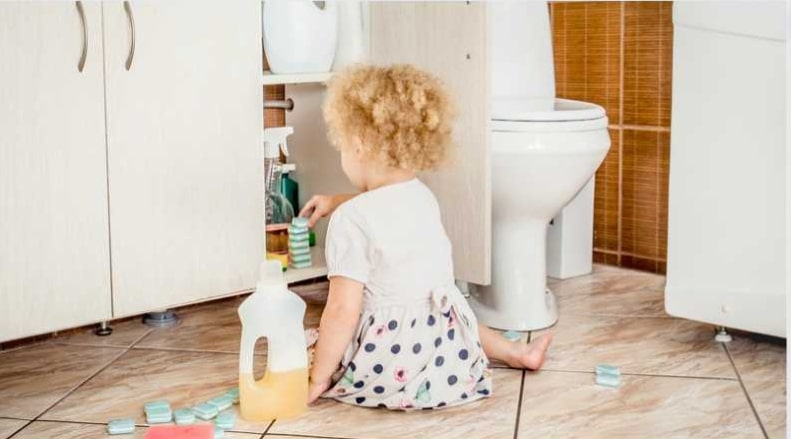
In the busy daily life, it’s easy to overlook the potential dangers lurking within our own homes. From cleaning products to pesticides, many household chemicals contain ingredients that can pose health risks, especially if they are subject to recalls. Here, we will explore practical strategies for minimizing exposure to recalled or dangerous household chemicals creating a healthier living environment for you and your family.
Understanding the Risks
Household chemicals are ubiquitous in modern life, used for cleaning, pest control, personal care, and more. While many of these products are safe when used as directed, others may contain harmful ingredients or be subject to recalls due to safety concerns. Exposure to these chemicals can lead to a range of health issues, including respiratory problems, skin irritation, allergic reactions, and even more severe conditions in some cases.
When a household chemical is recalled, it typically means that it has been found to pose a significant risk to human health or the environment. Recalls can be initiated by manufacturers, regulatory agencies, or consumer advocacy groups in response to reports of adverse effects or safety violations. However, even products that have not been officially recalled may still pose risks if they contain hazardous ingredients or are used improperly.
Practical Strategies for Minimizing Exposure
Reducing exposure to household chemicals requires a combination of awareness, diligence, and proactive measures. Here are some practical strategies for creating a healthier home environment.
Choose Safer Alternatives
When purchasing household chemicals, opt for products that are labeled as environmentally friendly, non-toxic, or free from harmful ingredients such as volatile organic compounds (VOCs), phthalates, and chlorine bleach. Look for third-party certifications, such as the Environmental Protection Agency’s Safer Choice label or the Green Seal certification, which indicate that a product meets stringent safety and environmental standards.
Implement Eco-Friendly Cleaning Practices
Many traditional cleaning products contain harsh chemicals that can irritate the skin, eyes, and respiratory system. Instead, consider using natural alternatives such as vinegar, baking soda, and lemon juice, which are effective for cleaning and disinfecting without exposing you to harmful toxins. You can also explore eco-friendly cleaning brands that offer plant-based, biodegradable formulations that are safer for both your health and the environment.
Create a Chemical-Free Zone
Designate certain areas of your home, such as bedrooms and children’s play areas, as chemical-free zones where only non-toxic, natural cleaning products are allowed. This can help minimize exposure to harmful chemicals, especially for vulnerable populations such as children, pregnant women, and individuals with respiratory conditions or sensitivities.
Practice Proper Ventilation
Proper ventilation is essential for reducing indoor air pollution and dissipating potentially harmful fumes from household chemicals. Open windows and doors whenever possible to allow fresh air to circulate throughout your home. Use exhaust fans in kitchens and bathrooms to remove steam, odors, and pollutants from cooking, showering, or cleaning.
Adopt Protective Measures
When handling household chemicals, always follow the manufacturer’s instructions and use protective equipment such as gloves, goggles, and masks to minimize direct contact and inhalation of fumes. Store chemicals securely in their original containers with childproof caps, out of reach of children and pets, and away from food, drinks, and heat sources.
Stay Informed and Vigilant
Keep abreast of product recalls and safety alerts issued by regulatory agencies such as the Consumer Product Safety Commission (CPSC), the Food and Drug Administration (FDA), and the Environmental Protection Agency (EPA). Regularly check the labels of household products for any warnings or cautionary statements regarding potential hazards or safety concerns. If you have any doubts or concerns about a particular product, err on the side of caution and discontinue its use until you can verify its safety.
Exploring Notable Recalled Household Products Cases
Throughout history, there have been several high-profile cases of household products being recalled due to safety concerns, highlighting the importance of vigilance and regulation in protecting consumers. Examining these cases can provide valuable insights into the potential risks associated with household chemicals and the need for proactive measures to mitigate them.
Johnson & Johnson’s Talcum Powder: Perhaps one of the most well-known cases in recent years involves Johnson & Johnson’s talcum powder products. In 2020, the company announced the discontinuation of its talc-based baby powder in the United States and Canada amid thousands of lawsuits alleging that the product contained asbestos and caused ovarian cancer and mesothelioma. Despite Johnson & Johnson’s denials and assertions of product safety, the controversy surrounding its talcum powder products underscores the importance of thorough testing and transparency in the manufacturing and labeling of consumer goods.
Lead Paint in Children’s Toys: Lead paint contamination in children’s toys has been a recurring issue, prompting numerous recalls and safety alerts over the years. Lead exposure can cause serious health problems, especially in young children whose developing bodies are more susceptible to its harmful effects. In 2007, Mattel, one of the world’s largest toy manufacturers, recalled millions of toys worldwide due to excessive levels of lead paint and other safety hazards. This case highlighted the need for stringent safety standards and oversight in the production of children’s products.
Roundup Weed Killer: Roundup, a widely used herbicide produced by Monsanto (now owned by Bayer), has been at the center of a legal battle surrounding its active ingredient, glyphosate. The International Agency for Research on Cancer (IARC), a branch of the World Health Organization (WHO), has classified glyphosate as a probable human carcinogen. This classification has led to thousands of lawsuits alleging that Roundup exposure caused or contributed to the development of cancer, particularly non-Hodgkin lymphoma.
Takata Airbags: While not a household product in the traditional sense, Takata airbags installed in millions of vehicles worldwide were subject to one of the largest automotive recalls in history due to defective inflators that could rupture and propel shrapnel into the vehicle occupants upon deployment. The recall, which affected vehicles from numerous automakers, underscored the potential risks associated with faulty automotive components and the importance of prompt action to address safety defects.
Learning from Past Mistakes
These notable cases serve as sobering reminders of the potential dangers posed by household products and the critical role of regulation, oversight, and consumer awareness in ensuring their safety. By learning from past mistakes and taking proactive measures to minimize exposure to recalled or dangerous household chemicals, individuals can protect themselves and their families from harm and promote a healthier, safer home environment for all.

Lifebing is driven by an unrelenting passion for promoting health and well-being, our team is wholly committed to curating exceptional content and immersive experiences.
